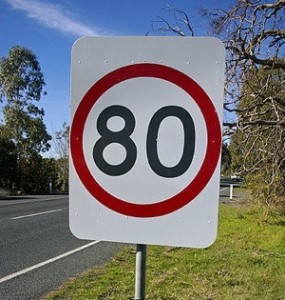Safer Speeds a Major Focus of Road Safety

Ever driven down a road and wondered, “Why on earth is the speed limit so low on this road?” Well for every speed limit set there is a reason and set of risk factors identified beforehand by authorities.
Although speed is one of the biggest killers on our roads according to statistics, authorities do not rush into minimising speed limits without first giving it the proper consideration and doing the adequate amount of research, delegates of the ARRB conference recently heard.
The Australian Road Research Board (ARRB) is an organisation which provides research, consulting and information services to the road and transport industry. The ARRB recently commenced its conference during which attendees heard the research based model for maintaining and revising speed limits around the nation.
According to researcher Chris Jurewicz, the four severe crash risks are considered by authorities before they reduce speed limits. He explained to delegates that a lot of study and consideration goes into every speed limit set by the government.
Apparently in both rural and urban roads in Oz, authorities look for the severe crash risks before setting the speed limit. Jurewicz, who is a researcher for ARRB, went on to state:
“Safer speeds are recognised as one of the four pillars of the safe system vision, and hence, form a significant focus of road safety and speed zoning policies in Australia and New Zealand,” he says.
Source: http://www.fullyloaded.com.au
Jurewicz went on to highlight the consistent severe crash risk factors and reiterated that the reduction of speed limits isn’t considered unless these risk factors are identified and assessed. The article on Fullyloaded.com.au went on to explain what risk factors need to be identified:
Consistent severe crash risk factors are: recognised high-risk road engineering features, such as unsealed roads or narrow shoulders; speeds not suited to the road environment and its users; road user factors such as the annual average daily traffic; and existing severe crash data for the stretch of road in question.
Where these issues are prevailing, Jurewicz says Austroads’ non-binding model guidelines are likely to recommend a reduced speed limit.
Source: http://www.fullyloaded.com.au
Jurewicz says that the aim of reducing speed limits is to reduce harm and this is not something that can be taken lightly. Authorities put a lot of consideration into this decision and only do so when there is a high risk factor for crashes. He went on to state:
“The model guidelines aim to achieve harm reduction by reducing speed limits on high risk roads which cannot be reasonably treated,” his paper presented to the ARRB conference says.
“When applied, speed limit reductions are expected only on roads with consistently high risk of severe crashes.”
Source: http://www.fullyloaded.com.au



